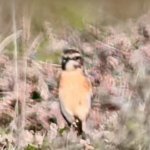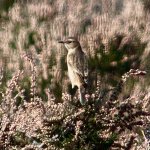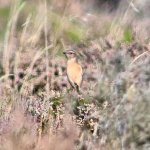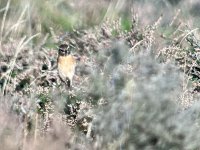Bismarck Honeyeater
Barely known member
I noticed this bird with naked eye, and an obvious adult male Stonechat, and assumed it was a female Stonechat.
On a quick check with bins, I thought it was an immature male Stonechat.
Later checking in the scope I began to think it was an immature Whinchat.
Tail pattern not seen unfortunately. Always a bit distant.




View attachment IMG_9864.mov
On a quick check with bins, I thought it was an immature male Stonechat.
Later checking in the scope I began to think it was an immature Whinchat.
Tail pattern not seen unfortunately. Always a bit distant.




View attachment IMG_9864.mov



